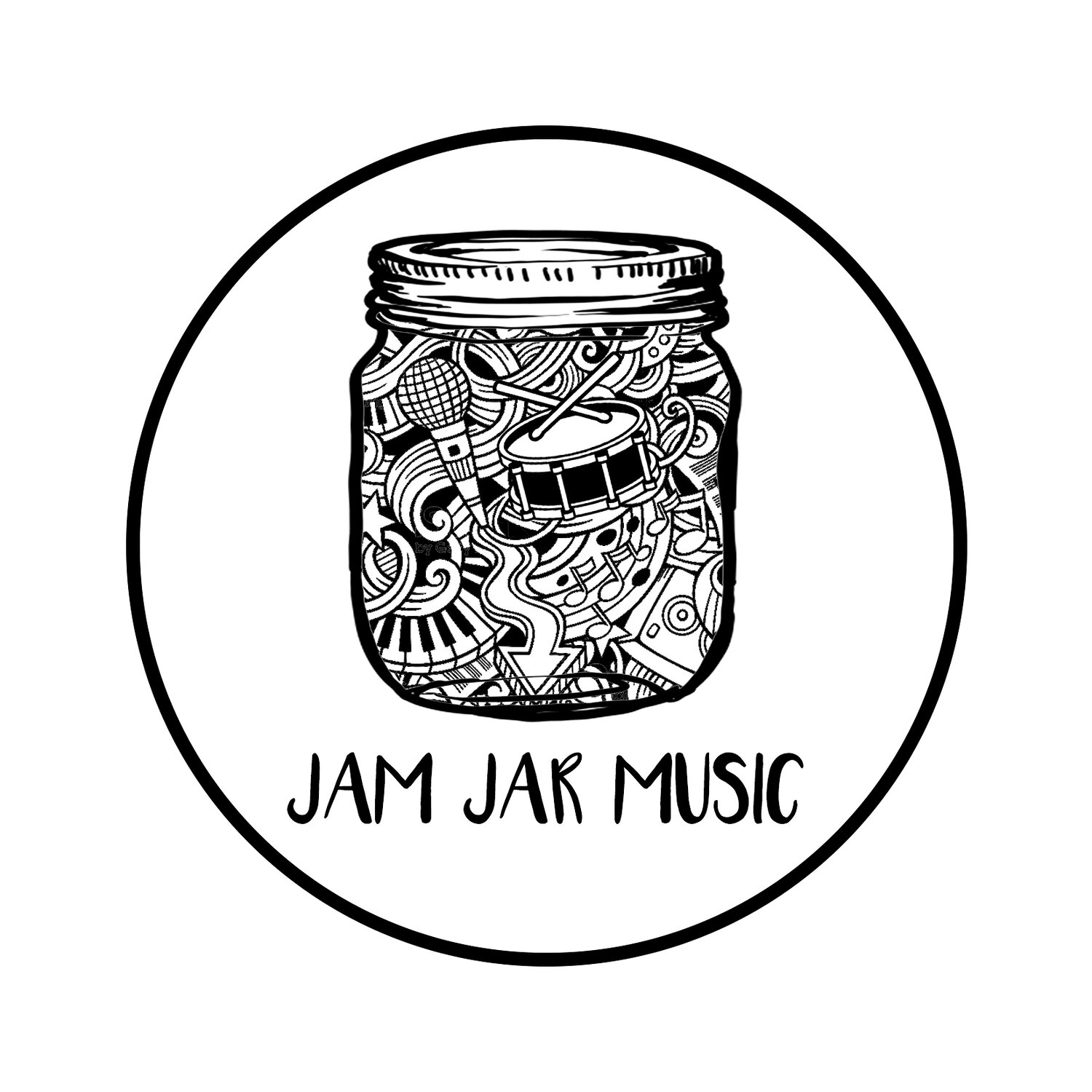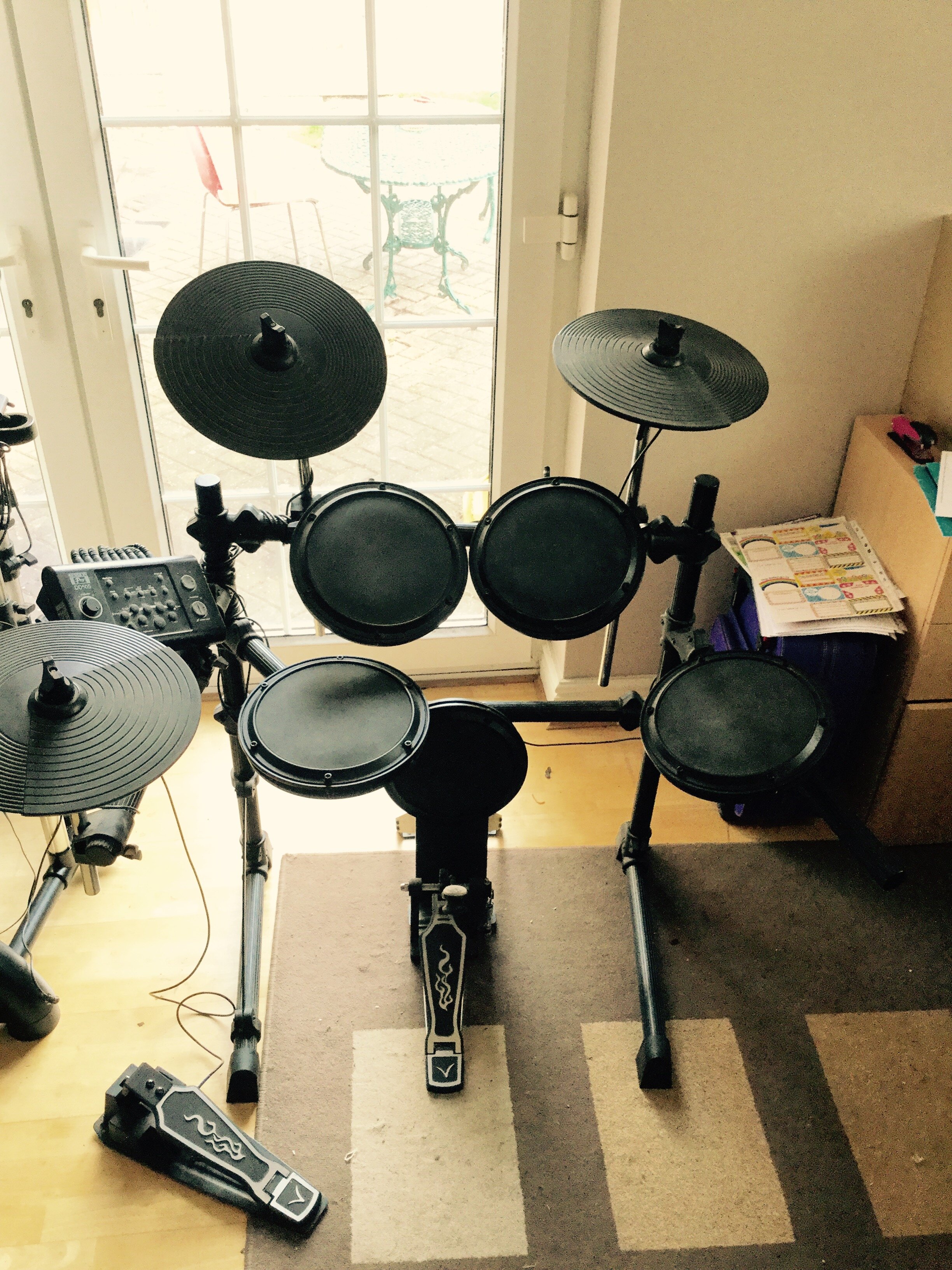So you've started learning to play the drums and you need something to practice on! There are many different types of drum kits available so you need to decide what is best for you. There are a few factors that will influence your decision
Practicality - How much space do you have? How much noise can you make?
Budget - We’d all love to spend thousands of pounds on a drum kit but sadly that isn’t always possible!
Use - Is it just for home practice? Are you wanting to gig with it?
Hopefully the information in this article will shed some light on what is available and help you to decide which kit is best for you. After arming yourself with some drum kit knowledge the best thing you can do is to go to a music shop and try some out. Unless you know exactly what you are looking for, be careful when buying drum kits online without trying them out first. It’s very difficult to hear, feel and gauge the size and layout of a drum kit just from a web-store photo. Derby folks … go to Rattle and Drum. I cannot recommend them enough … go there!Electric vs Acoustic
Acoustic drum kits are “normal” drum kits. The sound you hear is the true sound of the stick hitting the drum or cymbal. Electric drum kits are a set of rubber pads which are programmed to reproduce the sound of an acoustic drum kit when hit.
ELECTRIC DRUM KITS … are perfect for practicing at home, especially for the beginner drummer. They’re more compact and can therefore fit neatly in the corner of the room and you can plug headphones into them keeping parents, partners, housemates and neighbours happy! Not all households are suitable for an acoustic drum kit and electric kits have made it possible for every drummer to have a practice kit in their home.
Electric kits today are very responsive and feel extremely similar to acoustic drum kits to play. A student playing on an electric kit can still practice everything they’ve learnt on an acoustic kit without much of a problem. Most electric kits come with a few different sound settings featuring different types of drum kits which can be fun to explore and some of them even come with built in lessons and recording functions.
The major downfall of electric drum kits is that although the technology has come a long way, they still don’t react exactly the same as an acoustic kit and as a result students who only ever play on an electric kit can pick up bad habits. Many of the imperfections in a sound will be masked on an electric kit because the pads are programmed to produce a clean, controlled, professional drum sound when they are hit. In reality there are many variables that will contribute to the sound you actually get on an acoustic kit such as where on the drum the stick has struck, how much you let the stick rebound and how much force you are hitting it with. Another downside to electric kits is that until you get to the £1000+ market they are not really suitable for live use and even then they are rarely used in most styles of music. If you start learning in primary school, you will get your money’s worth out of your electric kit before you reach the age where you’re wanting to play in bands and will want to swap to an acoustic kit. However if you start learning in your teens and you’re hoping to start your first band in a few months time, an electric kit may not be the way to go.
Another point worth mentioning is that generally electric drum kits do not come with built in speakers so you will need to buy a drum monitor as an extra. Alternatively you can simply plug a pair of headphones into your kit which is perfect for home practice but you’ll never be able to show off your skills to anyone else. Technically you can plug an electric drum kit into any old speaker however it won’t sound very good. Due to the range of frequencies required I’d highly recommend getting a proper drum monitor.
ELECTRIC KIT SUMMARY … If you have just started out and will only be using the kit for practice between lessons for the next few years then go for an electric kit. They’re reasonably priced, less space consuming and much quieter. However if you are serious about developing your technique or don’t have regular access to an acoustic kit to try out what you’ve been practicing you may find an electric kit quite limiting. If you want to progress onto live performance any time soon, an electric kit might be a waste of money as you will find yourself wanting to replace it with an acoustic kit sooner than you think.
Pros: Cons:
- Much more practical to have in the house - Not as realistic
- Volume control - Not great for live performance
- Sounds professional - Speaker sold separately
ACOUSTIC DRUM KITS … are the real deal, arguably more fun (and look cooler!) They are however also undoubtedly less practical to keep in the standard home. Acoustic drum kits are loud and do not under estimate how loud they can be when alone in a room with one! Despite this, the volume does not have to be too much of an issue. You can pick a full set of damping pads for around £50 and these are very effective. Whilst you will still hear the thud of the sticks hitting the pads, the ring of the drums is completely silenced, however ideally you’d want to be able to play without the pads on occasionally to get the proper experience. If you’re never going to be able to take the pads off it might not be worth getting an acoustic kit.
The main advantage of an acoustic kit is that it is not trying to look, feel or sound like a drum kit, it IS a drum kit and it will sound and behave like a drum kit. No hiding behind nice studio produced electric sounds! The measure of a good electric kit is usually how much like an acoustic kit it is, acoustic kits obviously don’t have to try very hard to achieve that. Another huge positive point for acoustic kits is that they can be used for live performance. The cheaper kits may not cut it on the Pyramid stage at Glastonbury Festival but for entry-level bands and school bands most acoustic kits, even the budget ones, will do the job. Eventually, most drummers will want to perform and most performances will be on an acoustic drum kit. While the electric kits are set up in a very similar way to acoustic kits, inexperienced drummers can find the transition difficult. Most drum exams will be taken on acoustic drum kits and so using this type of drum kit to practice on will provide good preparation for the exams and future performances.
Price wise the beginner acoustic drum kits are similar to the beginner electric kits. You can pick up some extremely cheap acoustic kits however be wary of these as many of them are more like toys than musical instruments. A cheap and nasty electric kit will sound a little unrealistic and computerised but also relies on other factors such as the headphones/amp. A cheap and nasty acoustic kit however will sound like a bunch of pots, pans and bin lids. If in doubt, go to a music shop and give it a try rather than buying online. Although you won’t want to spend a fortune on your first drum kit and you can certainly upgrade further down the line, having a nice sounding kit is an incentive to practice and practicing on a kit that sounds bad no matter how well you play can really kill your drive. Something to consider when buying acoustic kits is although there are plenty of beginner set ups with everything you need to get started, most mid to high end kits are sold as “shells”. This means just the drums so no cymbals, sometimes no hardware. You should always read what is actually included when buying an acoustic kit.
ACOUSTIC KIT SUMMARY … Acoustic kits are more of a commitment than electric kits as they’ll take up a lot of space in your house and are much louder than an electric kit. However they are much more suitable for serious drummers and drummers who aim to play in bands or perform live. Anyone seeing it out for the long haul will probably require an acoustic kit at some point so it may be a better investment to go for an acoustic kit right from day 1.
Pros:
- The real deal!
- Will develop proper technique and control
- Better for live performance or playing in bands
- Better for practicing for exams
Cons:
- Loud
- Space consuming
- Cymbals sometimes sold separately
IN CONCLUSION … In my opinion you can’t beat a proper acoustic drum kit. If you have a suitable practice space in terms of space and noise control then go for it! If not then an electric kit will allow you to practice just fine.







